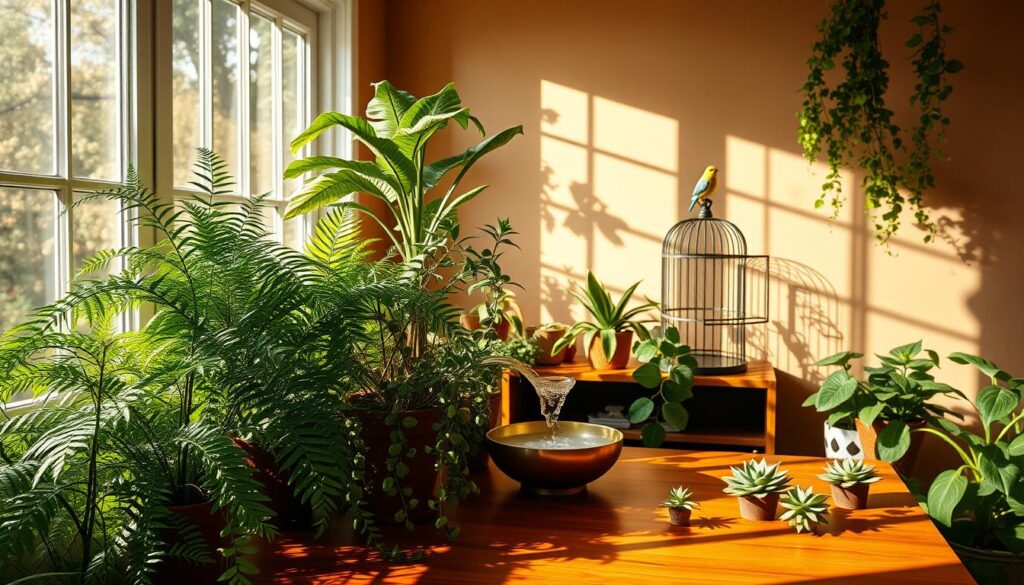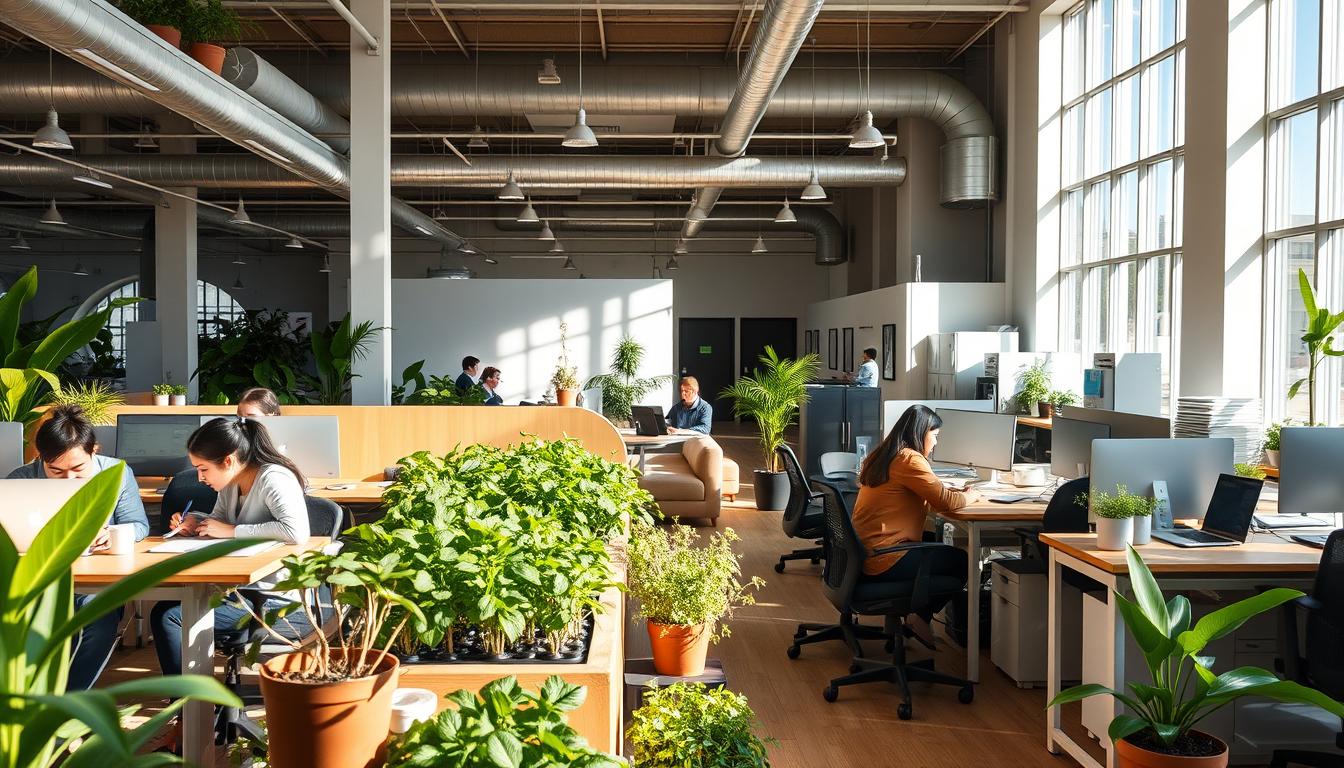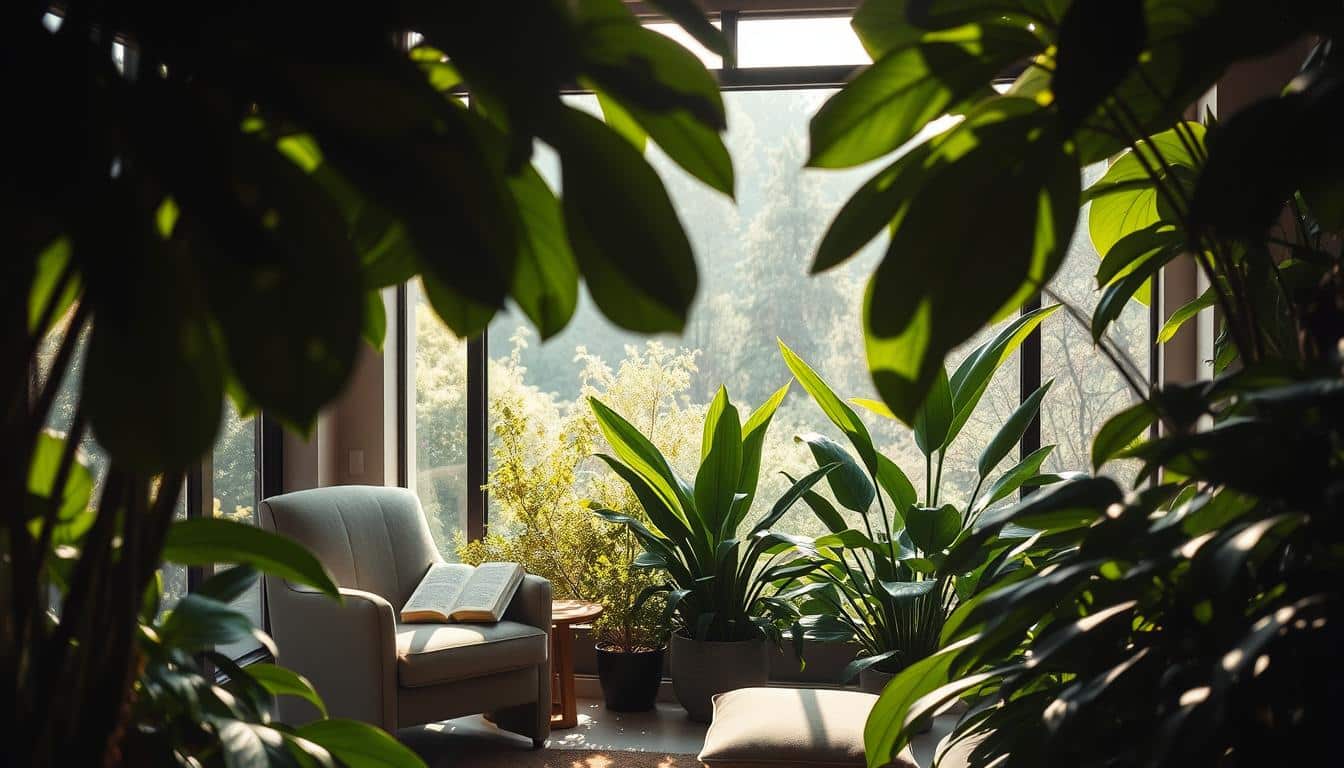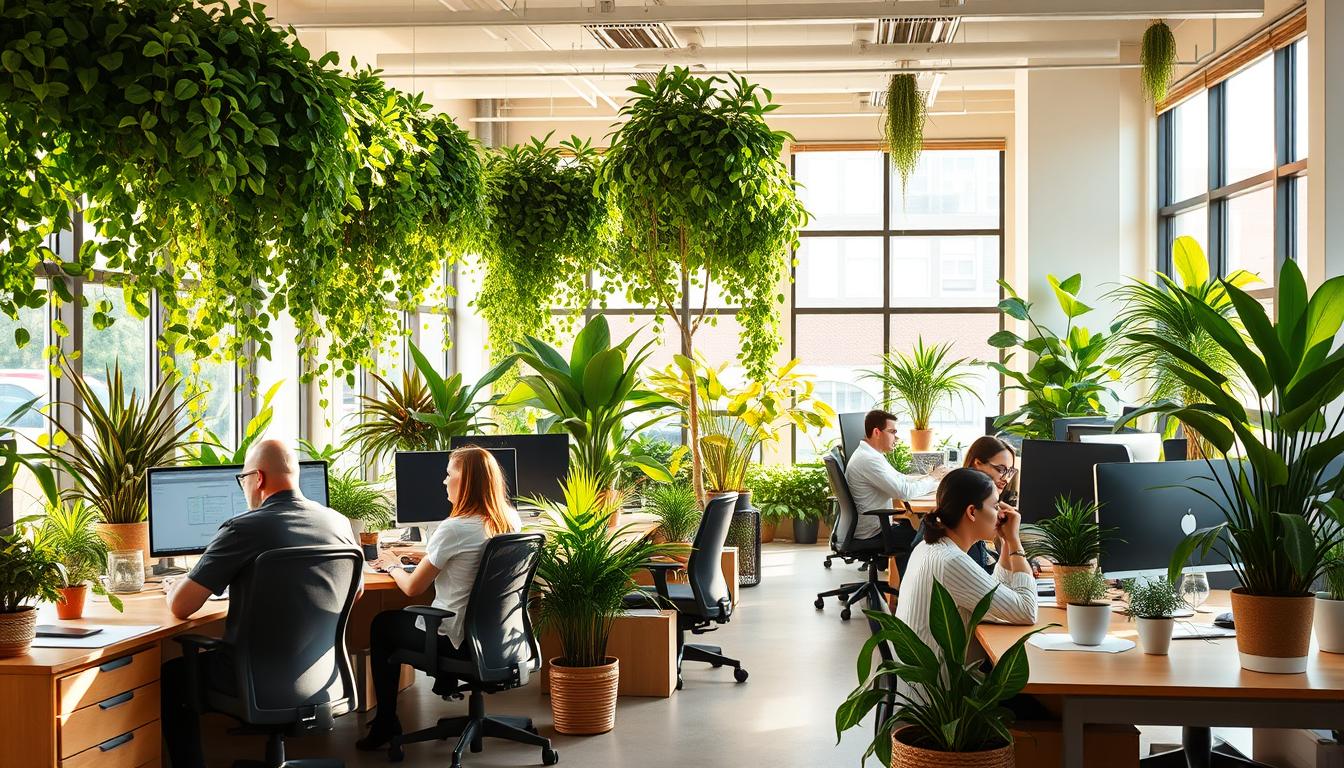The importance of workplace wellness is more recognized now. Biophilic design offers a new way to make offices healthier and more lively. It brings in desk-level airflow solutions that mix comfort with nature in design. Most Americans are indoors for about 90% of their day. So, using nature in office design is really impactful. It helps connect the indoor spaces with the natural world. This connection can improve mental and physical health, lower stress, and increase productivity.
Understanding Biophilic Design
Biophilic design comes from loving nature. It’s about connecting our spaces with the outdoors. By bringing nature inside, we can make places where people feel calmer and more focused.
There are three key parts to biophilic design. First, we have nature in the space. This means adding real plants and water features. Next, natural analogs mimic nature with patterns and textures. Finally, the nature of the space shapes its layout and design. Together, they boost both our mood and how well we work.

The Importance of Airflow in Workplace Design
Having good airflow in workspaces is key. If the air is bad, it can make people sick. But if it’s good, it makes the air inside better to breathe. This can make everyone work better. Studies show that if we have more fresh air and less CO2, our brains can work twice as well.
Putting in top-notch air systems means air moves well. This controls the heat and dampness. When it’s just right, everyone feels better and does their best work. So, making sure the air flows well at work is super important. It keeps us comfortable and helps our brains stay sharp. This is why it’s a big deal when planning modern offices.
Biophilic Design for Desk-Level Airflow Solutions
Bringing nature into the office helps improve airflow at desks, making employees feel better. This method makes indoor spaces nicer and boosts how much work gets done. It looks good and helps keep people healthy and comfy.
Creating a Connection Between Nature and Indoor Spaces
Design can connect us with nature through different ways. These include:
- Natural ventilation systems that bring fresh air inside.
- Adding plants or green walls to make spaces look and work better.
- Using sunlight and moving air to make active workspaces.
When we wisely bring nature into work design, people feel better and more connected to their space.
Benefits of Enhanced Airflow in Office Environments
Better airflow at your desk is critical for a healthy office. The main benefits are:
- Less stress and anxiety with better air quality.
- Higher focus due to the right airflow and fresh oxygen.
- More happy workers, which means more work gets done.
Natural airflow solutions make workplaces nicer and help people do better work. Using biophilic design, companies can build a place that values health and success.
Enhancing Employee Comfort Through Natural Elements
Employee comfort boosts productivity and morale at work. By adding natural design elements like indoor plants and organic materials, companies can make workspaces more soothing and welcoming. These changes help reduce stress and make employees happier with their jobs.
Focusing on workplace wellness by bringing in biophilic elements improves how employees feel. Studies show that nature-inspired designs boost mental health and thinking skills. Making these investments is key for modern workplaces that want to succeed in the long run.
Strategies for Implementing Natural Airflow Solutions
Using natural airflow methods can make offices healthier and more productive. Designing buildings to use natural wind patterns helps fresh air move through. This can be boosted by adding windows that open, letting employees control the air around them.
Ventilation doesn’t stop there. Installing systems that bring in outside air can make indoor spaces feel better. Adding plants cleans the air and raises moisture levels. This approach ties the office to nature, making people feel more at ease.
Benefits of Incorporating Green Walls in Airflow Solutions
Adding green walls to office designs brings lots of benefits. They’re not just pretty. They make indoor spaces healthier thanks to several features.
Noise Reduction and Temperature Regulation
Green walls are great for blocking noise. The plants in the walls take in sound, cutting down office noise. This helps people focus and feel less stressed. Plus, these walls keep temperatures more comfortable. They provide insulation and help cool areas down when it’s hot.
Improving Indoor Air Quality through Plant Integration
Green walls play a big part in making the air cleaner. They’re filled with plants that get rid of bad pollutants. This means the air is fresher for everyone. Having more oxygen around also boosts health and work performance. Using green walls shows a commitment to a healthy, sustainable workplace.
Incorporating Water Features for Natural Airflow
Adding water features to office spaces makes them more peaceful and helps with air flow. Things like fountains and aquariums do more than look good. They make the office feel calmer. The sound of water flowing can lower stress and make the workplace nicer for everyone.
Water features also help control humidity and temperature. This makes indoor spaces more comfortable. It’s part of biophilic design, which connects people to nature in buildings. Using water features can boost employee happiness and work performance. This makes the office a better place to be.
Adaptive Workspace Designs for Desk-Airflow Optimization
As work changes to include more hybrid spaces, adaptive workspace design becomes essential. These designs focus on making desks work better and improving airflow. They also make sure spaces can change as needed. By using layouts that can be changed, businesses can adjust their spaces. This lets them meet different needs and what employees like.
Adding smart furniture setups and partitions that can move improves air movement. It creates areas where the air feels good. This not only makes things more comfortable but also helps people work together better. When companies use these flexible designs, they do well in today’s fast-changing work world.
Utilizing Natural Light to Enhance Desk-Level Airflow
Natural light is key in today’s office design, boosting both desk airflow and worker happiness. Offices use glass walls, skylights, and shiny surfaces to get more daylight. This setup makes places welcoming and full of energy. Placing light sources well also helps people see better in a cool, airy space, boosting work output.
Letting in a lot of natural light follows biophilic design, which mimics outdoor conditions. It improves air around desks and helps mental health, making staff feel closer to nature. A brightly lit area energizes employees, leading to more involvement and happiness at work.
Conclusion
Biophilic design for desk-level airflow solutions is key in improving workplace wellness and boosting employee productivity. It includes plants, water, and good natural light. These features transform offices into places that support both work and well-being.
The demand for creative office designs is rising. Biophilic principles are becoming more popular. They turn typical workspaces into areas that encourage creativity and teamwork. They help people feel connected to nature.
Focusing on airflow with biophilic design is important for businesses. It meets employee needs and leads to a happier, more active workforce. By adopting these methods, workplaces will become better for everyone. They will increase overall satisfaction among employees.



